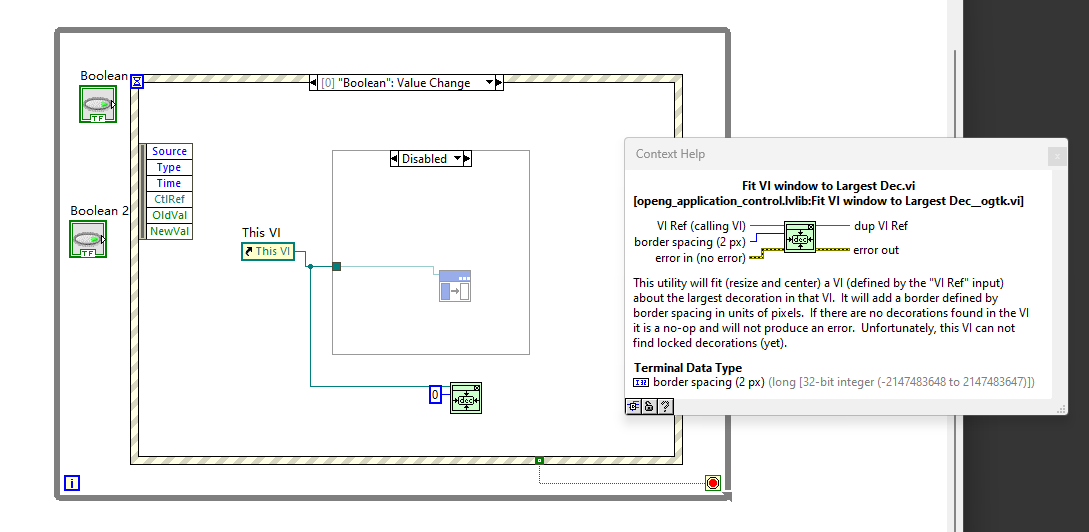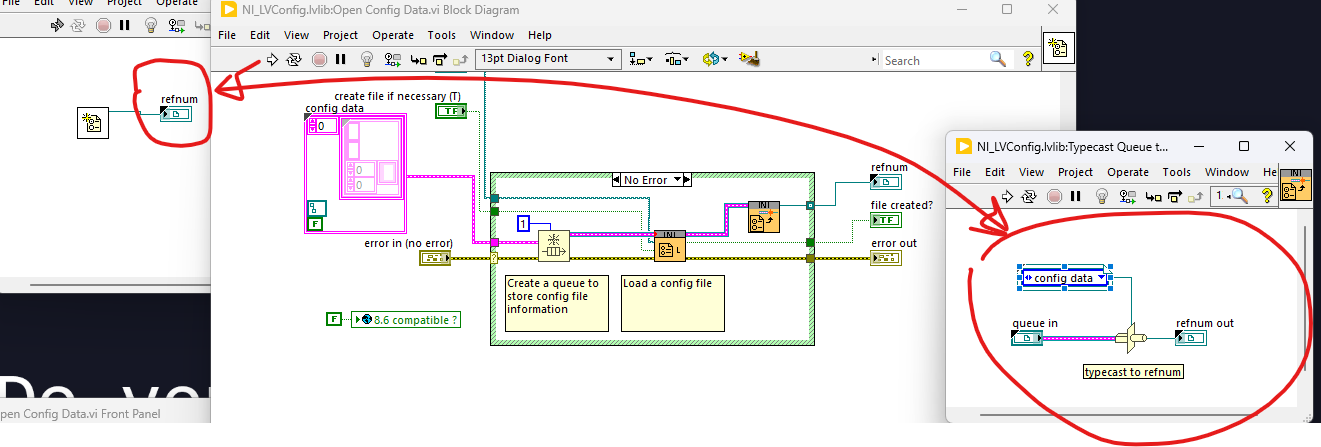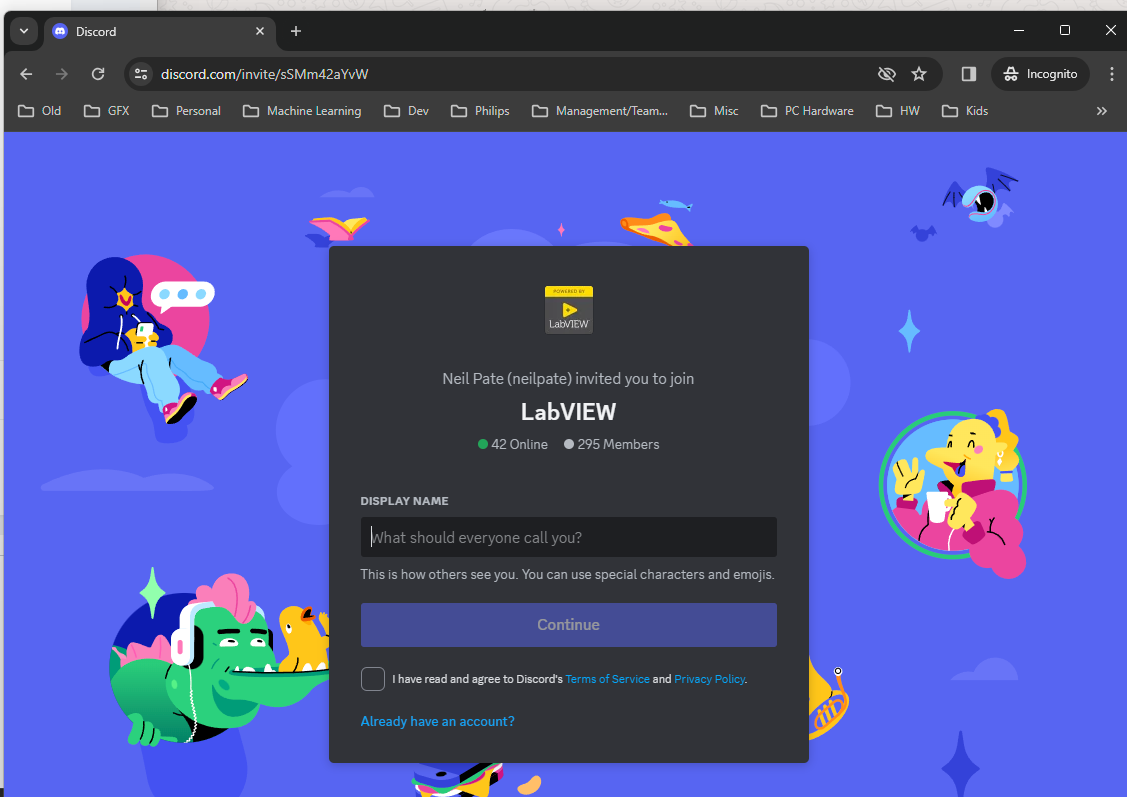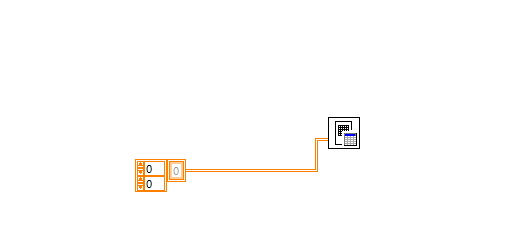-
Posts
1,185 -
Joined
-
Last visited
-
Days Won
110
Content Type
Profiles
Forums
Downloads
Gallery
Everything posted by Neil Pate
-
Hi @greatjames don't take this personally but are you are human? I really don't think it is appropriate for an LLM to generate content in response to advice on something as nuanced as a LabVIEW career.
-
We do not have too many Chinese readers on this forum, so you will probably have more success if you try in English
-
I have not used that Windows API before. Why don't you just resize the window to as big as the area you want to remain?
-

Pass complex data structure to C function
Neil Pate replied to Łukasz's topic in LabVIEW Community Edition
Nice! I did not know about this. -
This question can be interpreted a bunch of ways. Can you explain with a bit more detail? Maybe show us some pictures?
-
Wow this thread is a blast from the past. I have actually used LapDog in a project many years ago! And Steve called it: I remember reading this thread and totally glossing over this idea, which I now 100% support.
-
for what it is worth, we do this... I have a shallow-ish hierachacy somthing like ths: actor <-- device <-- type_of_device <-- concrete_implementation We have some scipting code to help us make a new instance of type_of_device <-- concrete_implementation I have a template with the last two in a .lvlib, and we clone them as needed to two brand new classes. To further complicate, our stuff is in PPLs.
-
For your own long-term sanity, I do not recommend replacing any existing wires you have with a variant+attributes. Maybe I am misunderstanding your use case though...
-
@Jerzy TarasiukI think what a few of us are saying is do you really need to script this code, or can you just make it once or twice manually for your use-cases and move on with life? It should be a pretty big red flag that after several decades of LabVIEW FPGA/RT nobody else has really done this.
- 21 replies
-
- fpga
- serial port
-
(and 2 more)
Tagged with:
-
Probably not relevant, but the only time I ever managed to hard-crash (lock-up) a running cRIO was when I was using the (I forget the API exactly) API to set the RT clock. I was doing this once a second to keep some clocks sync'd and apparently the cRIO just didn't like it. This was so long ago I forgot how I figured out exactly what the problem was. I think there were some log files somewhere that *may* have had a tiny bit of useful info in them.
-
Not sure I buy your logic, are you saying by keeping the refnum the old config API and the new one would be able to work together? ? Surely that would not have worked either. I cannot recall how the old API was implemented but I am guessing it was not the queue based one we have now (which I don't love either to be honest). Anyway, let's not lose too much energy arguing over something this old 🙂
-
Hmm, I think being able to wire that INI refnum into any file API and not having LabVIEW moan at you is definitely a bug.
-
oops, sounds like a 30 year old bug! I think I remember the Config API was re-written sometime around LV 8.0? (or is my memory faulty)
-
Sorry I did not really offer any suggestions, I am not sure how to flush an ini file (never needed to). I normally close the file immediatley after modifying the contents.
-
I am a litle surprised LabVIEW lets you wire this together, as the reference coming out of the Open Config Data is not actually a file reference it is a queue reference. So when you try and Flush you are passing in a Queue reference not a normal File reference, so this will not work.
-

National instrument GITHUB repo NI/Linux
Neil Pate replied to Youssef Menjour's topic in LabVIEW General
A few years ago I have managed to get RT installed on a regular PC. It seemed to work ok and did some simple tests using the network card, but never used it for anything serious/production, more just to see what was involved. I believe that doing this might be in violation of some licensing agreement. -
ah ok, that explains things. No there is no LAVA discord.
-
I only know of one general LabVIEW discord server. I am not sure what the top one in your picture is! That link works fine for me (in an incognito session)
-
@Zyl that link should not expire, does it not work for you? (https://discord.gg/sSMm42aYvW)
-

Virtual LabVIEW User Groups
Neil Pate replied to Dasha Chichasova's topic in LabVIEW Community Edition
Hi Dasha, we have a special channel for user groups over on the Discord. Would you be able to post it there also? Here is an invite to the Discord if you are not already a member: https://discord.gg/sSMm42aYvW -

Can I ride the LV/TS train to retirement?
Neil Pate replied to Phillip Brooks's topic in LAVA Lounge
I am pretty sure Rolf knows it is not any kind of criticism. -

Can I ride the LV/TS train to retirement?
Neil Pate replied to Phillip Brooks's topic in LAVA Lounge
@Rolf Kalbermatter I know you did not mean this, but I love it! -

Can I ride the LV/TS train to retirement?
Neil Pate replied to Phillip Brooks's topic in LAVA Lounge
Sure I know this pattern well, just prefer to have a single "mailbox" type event inside my actors for messages into the actor. I don't want to deal with the drama and scripting just to be able to have different typed events. My layer above the variant is all typed, so I don't really have an issue with converting variants to their real types. But of course everyone must do whatever pleases them most. I have way that works for me, my team, and the kinds of things that we build, so have no need to make it more complicated. -

Can I ride the LV/TS train to retirement?
Neil Pate replied to Phillip Brooks's topic in LAVA Lounge
While I appreciate dynamic languages and the flexibility they offer I think this is pretty bold blanket statement and is totally context sensative. Would you want to write a driver for your GPU with a language that does not offer strict typing?








